l’ve left my home in Vitulano 20 years ago, but I continue to consider myself fully Vitulanese and, just like every Samnites, to be proud of my origins.
It would be interesting to investigate the reasons for this pride which is typical of those born and raised in these country villages, in contact with the land, traditions, ancient flavours.
I can definitely talk about my country, because I know it thoroughly and because today, I can look at it with that right detachment that my life choices have imposed.
Is it possible to be proper vitulanesi even away from home? The answer is yes. When every Vitulanese leaves their country, they bring with them the places, faces, colours, knowledge and flavours of this land.
To say Vitulano is indeed to say many things: the mountains, the churches, the sheep farming, San Menna, the farmhouses, the marble, the chestnuts, the popular songs, the festivals.
I will now try to give a short description of my country.
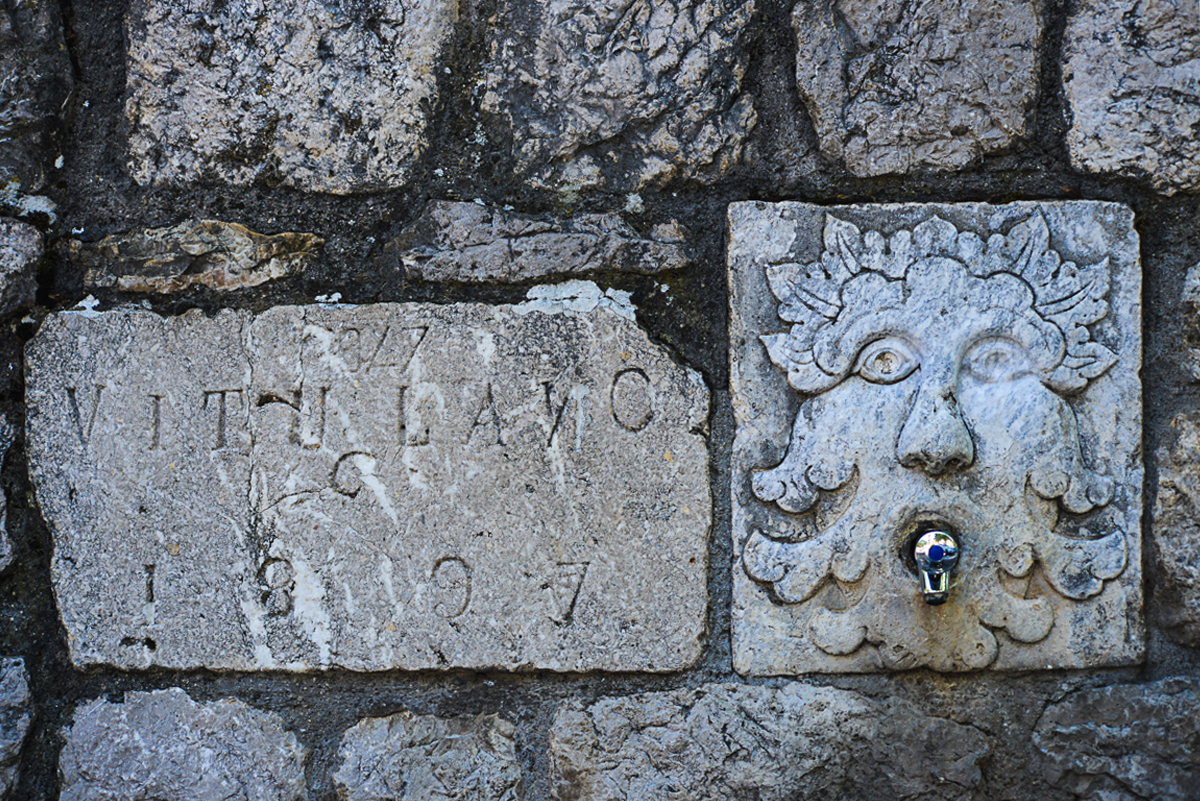
The story in short
Today Vitulano is a small town in the province of Benevento, with almost 3000 inhabitants, located at the foot of Mount Pentime. The altitude varies between 200 and 500 meters above sea level.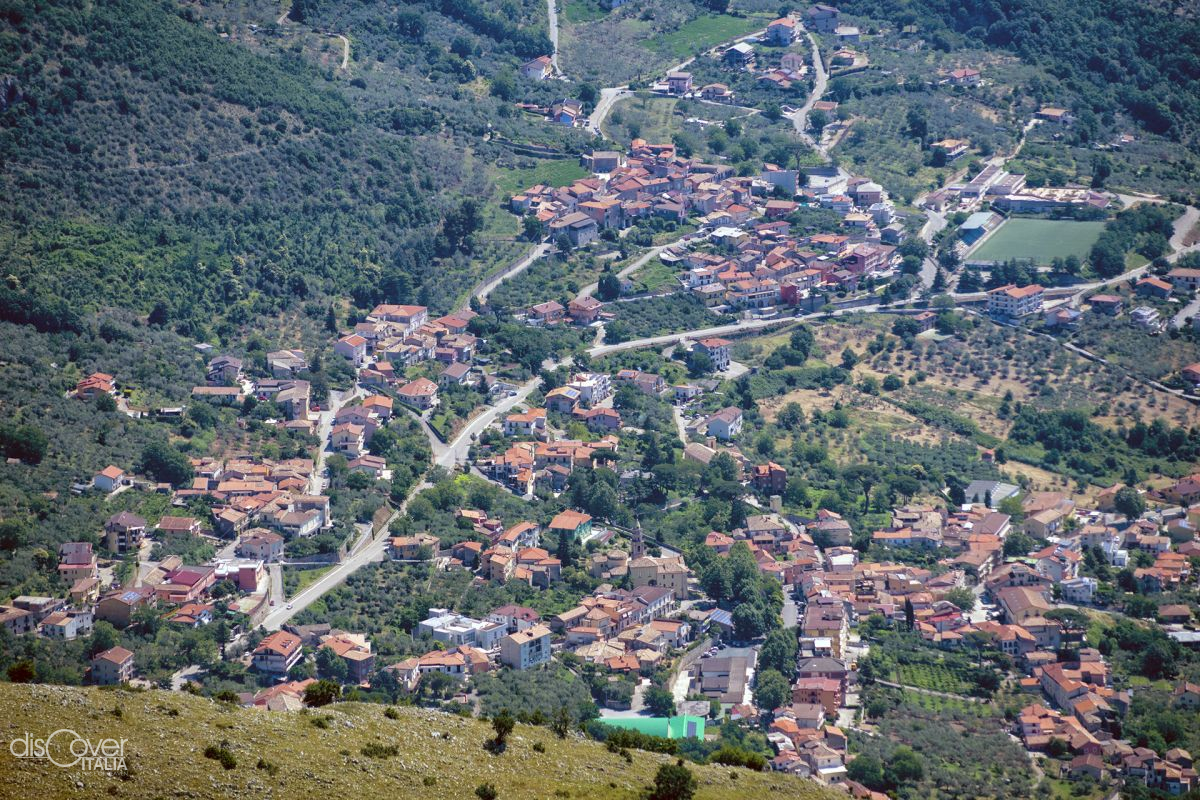
The origins of the town are lost in the mists of time, since remains dating back to prehistoric times have been found in the area. But the most famous monuments of the past, that proves a certain importance during the Middle Ages, are the ruins of the Madonna della Grotta, an ancient Benedictine abbey founded in 940, a spiritual, cultural and economic center since eighteenth century. Even today it is possible to visit the ruins of the ancient monastery located in the mountains in a strategic point between the Vitulanese and Telesina valleys. Unfortunately, the rich library of the monastery, kept in the cathedral of Benevento, was lost due to the bombing of the Second World War.
The political and economic importance of Vitulano within the Vitulanese Valley dates back to 1456, when the city of Tocco was destroyed by an earthquake, which until then was the most important political center of the valley. With the destruction of Tocco, Vitulano acquires a political and economic power that helped its development.
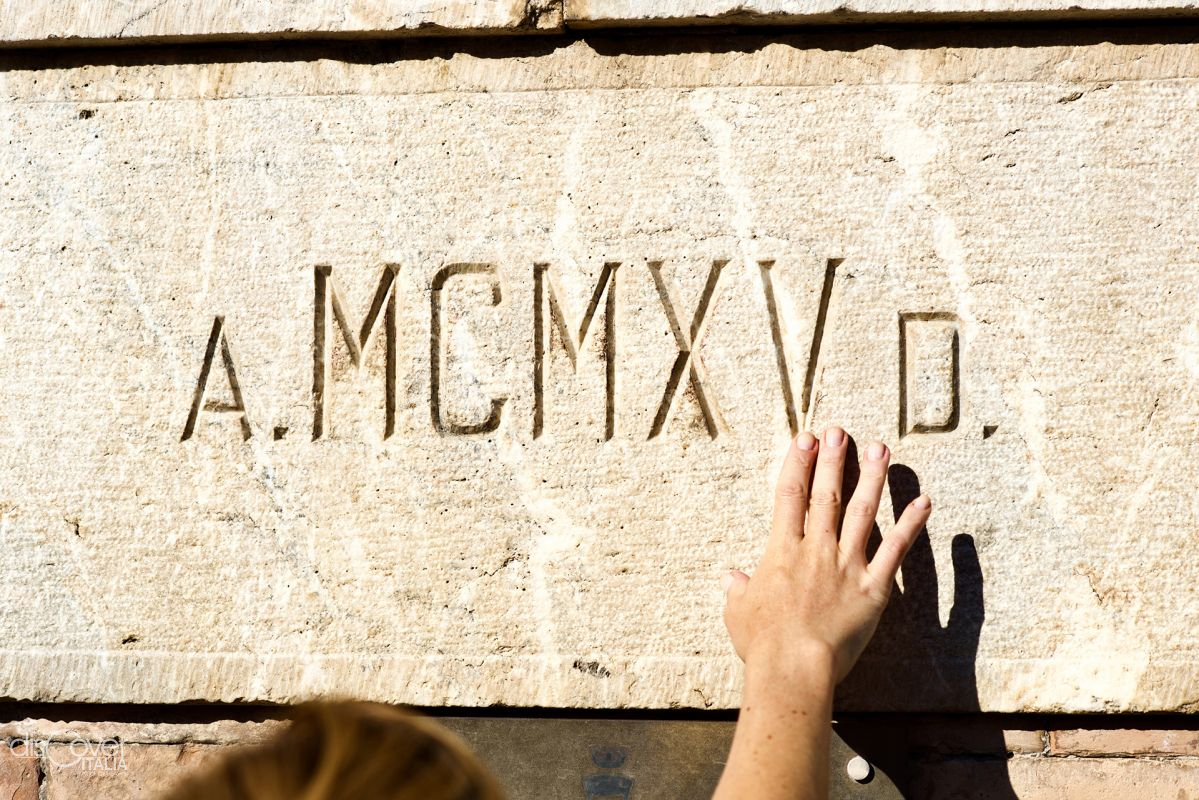
Unlike what one can imagine, Vitulano as a municipality is very recent. At the end of the '400 people started to talk about the State of Vitulano, a State including the universities of Santa Maria Maggiore and Santa Croce plus those of the other towns in the Valley. Each university was divided into farmhouses. The State of Vitulano had 36 farmhouses divided by 7 universities. We will have to wait until 1832 with the union of the two universities (Santa Maria Maggiore and Santa Croce) and the legal founding of the municipality (municipium) of Vitulano.
When we talk about universities (universitas), we are not referring to “atenei” universities, but to the name with which the municipalities in southern Italy were indicated by the Angevins up to the nineteenth century. Each university was divided into farmhouses, which are small urban agglomerations usually consisting of a noble palace, the houses of the people and sometimes a church. In Vitulano there were 20 farmhouses: 12 for the University of Santa Maria Maggiore and 8 for Santa Croce. Even today, wandering around the farmhouses (now no longer distinct as in the past), it is possible to admire the ancient palaces, the alleys and the numerous churches scattered around the town.
In the '500 the inhabitants of both universities wanted to build a monumental church halfway between the two universities of S. Maria Maggiore and Santa Croce: and so, the most important church in the country was built, the collegiate church of SS. Trinity, to represent the unity of the Vitulanese.
Knowing Vitulano also means "meeting" the most illustrious Vitulanese, which is its patron saint and protector: San Menna solitario, a Vitulanese hermit of the VI century, who retired to a solitary life in the mountains in the years when the Longobards invaded Sannio. Saint Gregory the Great speaks of him in his dialogues. The devotion to San Menna is still very much alive and every year in May the traditional procession on the mountains at the saint's hermitage is repeated.
Another particularly happy period was the nineteenth century, the century of "unity": of Vitulano (1832) and of Italy (1861)! This was the century in which the deputy Enrico Riola (1836-1919) and another illustrious Vitulanese were born, Cardinal Camillo Mazzella (1833-1900), a Jesuit, theologian and collaborator of Pope Leo XIII. Cardinal Mazzella played a leading role in drafting the first social encyclical, the Rerum Novarum.
Among the illustrious characters of the country, we must also remember Sister Maria Angela Goglia (1910-1996), the only nun in Italy to have been awarded the War Cross for military valor "on the field". Sister Maria Angela, vicar of the Compassionist Sisters of Rome, in 1943-1944 hid anti-fascists, fugitives and about 60 Jews in her convent to save them from deportation. A real pride for all of us!
Vitulano's liveliness continued for a good part of the '900. After the war, the country experienced a revival of political and cultural life, with a flowing of unique ideas. Vitulano was one of the few towns in the Sannio where, during the referendum of 1946 the republic won; later, in 1974, the majority of Vitulanese spoke out in favour of divorce. Vitulano was the stage for a very fruitful political debate between parties, in particular between the Christian Democrats and the Communist Party.

The artistic heritage
Vitulano is the town of churches. There are about 15 among churches, basilicas, sanctuaries and chapels. This testifies the importance and wealth that the country enjoyed in the past. The oldest churches are built on the remains of ancient pagan temples, while others are of more recent construction.
All these churches are embellished with works of art, often of great value, even by local artists and decorated with the local stone known as Vitulano marble. In the past this red marble was highly sought after, so much that Luigi Vanvitelli himself came in person to choose the marble to be allocated to the Royal Palace of Caserta. In fact, the central staircase of the Palace was built with Vitulanese marble.This Marble was used for the altar frontals and holy water fonts of many churches not only in Vitulano, but also in other places in southern Italy. It can be even found in the Moscow Kremlin. Today the small quarries still functioning do not allow a large mining activity, but only allow to satisfy the needs of a small artisan activity.
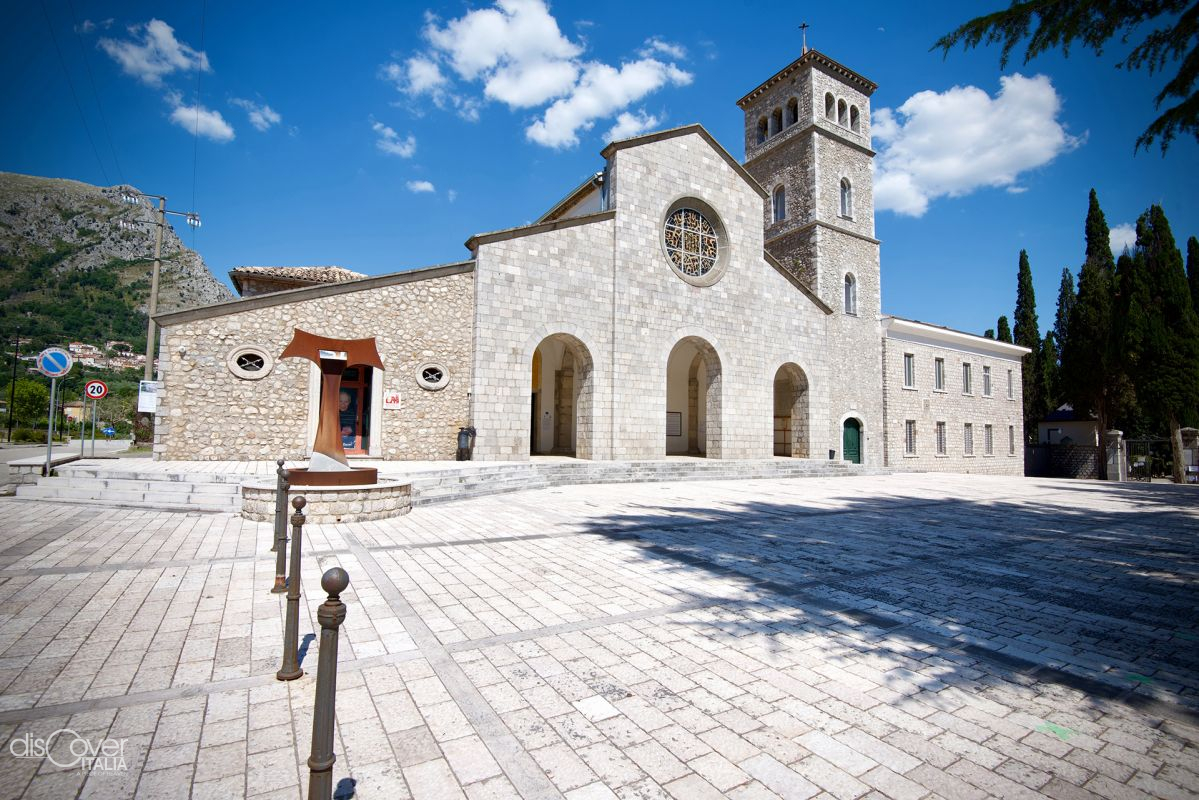
The two parish churches, and seats of the universities are Santa Maria Maggiore and Santa Croce. Both standing on ancient pagan temples. In the oratory of SS. Corpo next to the church of Santa Maria Maggiore, it is possible to admire the Last Supper by Pompeo Landolfo, from the Neapolitan school, dated 1596. The parish church of San Pietro, at the beginning of the town, stands on an ancient temple of the goddess Fortuna.
At the center of the town there is the collegiate church of SS. Trinità (today the mother church), where the relic and the statue of San Menna hermit are kept. In the church one can admire various paintings and statues of value, including the canvas of the Saints medics Cosma and Damiano and two eighteenth-century golden statues of the Immaculate and the Madonna del Rosario. As in other churches, the decor is Baroque. The monumental complex of the SS. Trinità also includes the bell tower from the Vanvitellian school and the Chapel of the nobles. In the past, the local nobility was part of the coven of the Immaculate, known as the "Congrega dei Nobili", which had its seat in the chapel located behind the SS. Trinity. In the chapel, entirely frescoed, it is possible to admire the vitulanese marble altar and the ancient wooden choir. A Neapolitan statue of the Immaculate was also kept here, but celebrated on 8 September on the day of the Nativity of Mary. In recent years, the chapel has been used for the exhibition of works by contemporary artists (currently by the sculptor Mariano Goglia).
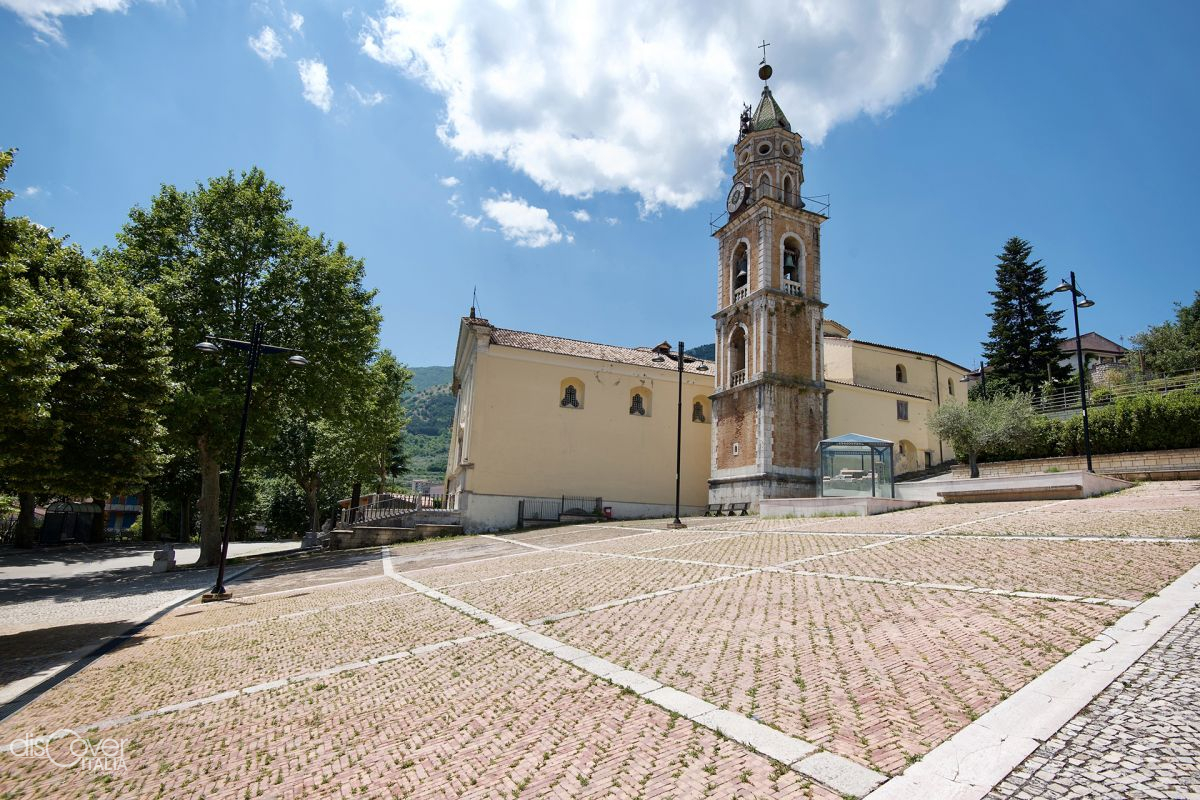
Another place of great artistic and spiritual value is the basilica of the SS. Annunziata and the convent of St. Anthony of the Minor Friars. The Franciscan convent was founded by San Bernardino da Siena in 1440. Since then, the friars have shared every moment of their life with the inhabitants of the valley. The church of SS. Annunziata is in Romanesque style. On the high altar you can admire the painting on wood of the Annunciation by Cristoforo Faffeo from 1482. The great "attraction" of the church, however, is still today the miraculous statue of St. Anthony of Padua, which is carried every year in May in procession through the various villages of the Valley, always with great participation of the people.
Besides the sacred buildings, in Vitulano it is possible to admire numerous ancient noble palaces (such as that of the Mazzella, the Barons Buono, Abbamondi, Rivellini and others) scattered throughout the town.
Particularly characteristic are also the ancient fountains, once a place for meeting and socialization. The most famous of all is the Royal Fountain, located right on the border between the two universities.
But in Vitulano there's more then just monuments of the past. Walking through the town, you can come across some modern works, testifying the lively cultural activity of recent years. An example is the work "The solitary" by Angelo Casciello at Piazza San Menna. But the temple of modern art is certainly the Municipal Gallery of Contemporary Art, in the building of the former Magistrate's Court, which boasts a rich collection of works by artists, including Mimmo Paladino, Nicola De Maria, Jannis Kounellis, Casciello and the artist Vitulanese Nicola Mastrocinque. Numerous works have been acquired by the Municipality since the 1980s, when the "Camposauro International Art Prize" was held (of which Nicola Mastrocinque was founder), a cultural event that attracted artists from all over the world. In the days of the Camposauro Prize, the artists were hosted by local families and they used to make artworks to be left as a gift to the town.
The passion for contemporary art is also attested by the presence of various private collections, the most famous of which is displayed in Tommaso De Maria's Casa Turese gallery at the Fuschi farmhouse.
Following the model of the Camposauro Prize, today the International Sculpture Symposium takes place, an art prize aimed at enhancing one of Vitulano's greatest treasures: marble. In the days of the Symposium, the artists create their works in Piazza SS. Trinity, to give everyone the opportunity to follow its realization step by step. The winning work is then installed in a part of the country.
In Vitulano there is also a rich intangible heritage of popular songs, telling moments of a life that once was, such as encounters at the fountain or the loves of a shepherd. Of course, the main theme is always love. Every Vitulanese known U pastore, Funtana mia, Vaccaro 'nammurato, U frisco' and 'sti chestnuts, the vitulanese tarantella and many other songs that were collected by the Sannio Popular Research Group between the 70s and 80s. Today the most famous folk song group is "I trementisti".
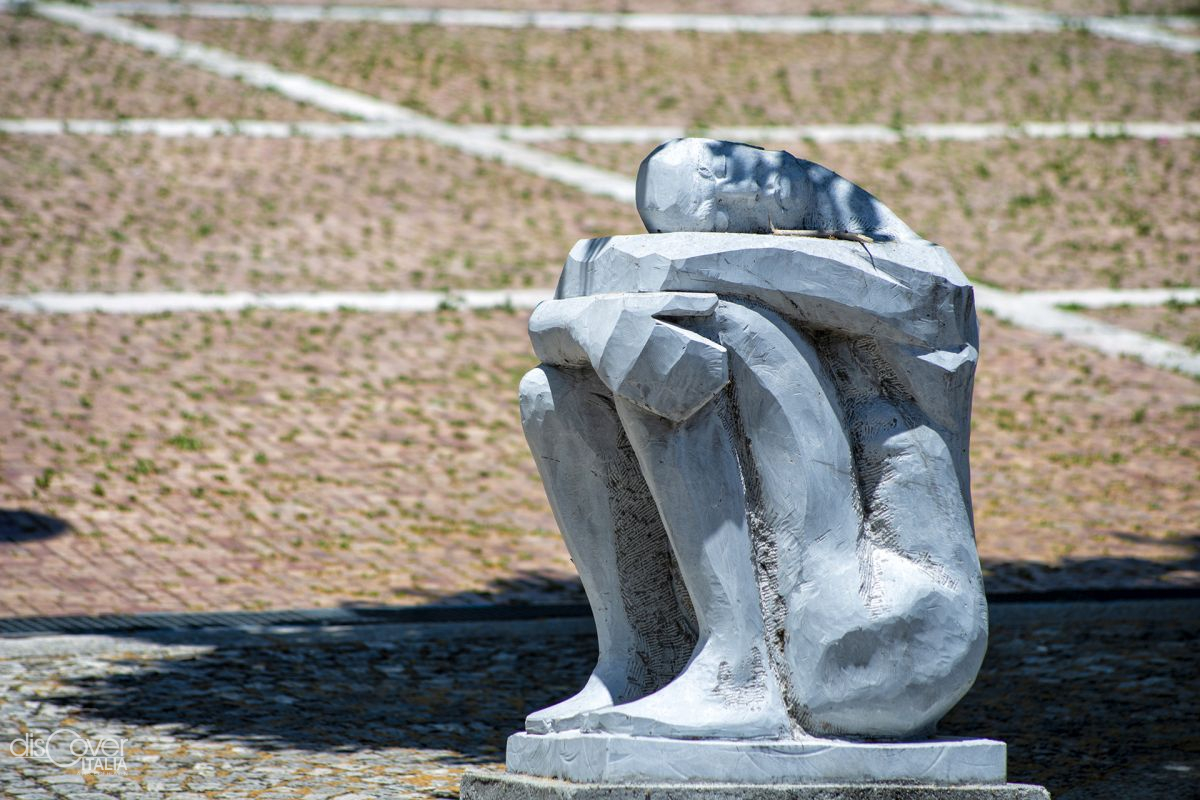
The holidays
Vitulano is considered by many to be the town of popular celebrations, both laic and religious, marking the passing of time.
The most important of the year is the patronal feast in honor of San Menna solitario, held on the Monday after Pentecost, between May and June. As often happens with the patronal feasts of southern Italy, there is no clear dividing line between religious and civil feast. The spiritual and the "pagan" aspects merge, so much so that moments of prayer and fun are lived with the same intensity and participation. In the feast day's morning, the statue of the saint is carried in procession to the hermitage on Mount Pentime. After the sacred rites, we entertain ourselves with songs and dances, between a glass of wine and the unavoidable capocollo. Then, In the evening, there is no shortage of concerts and shows in the square.
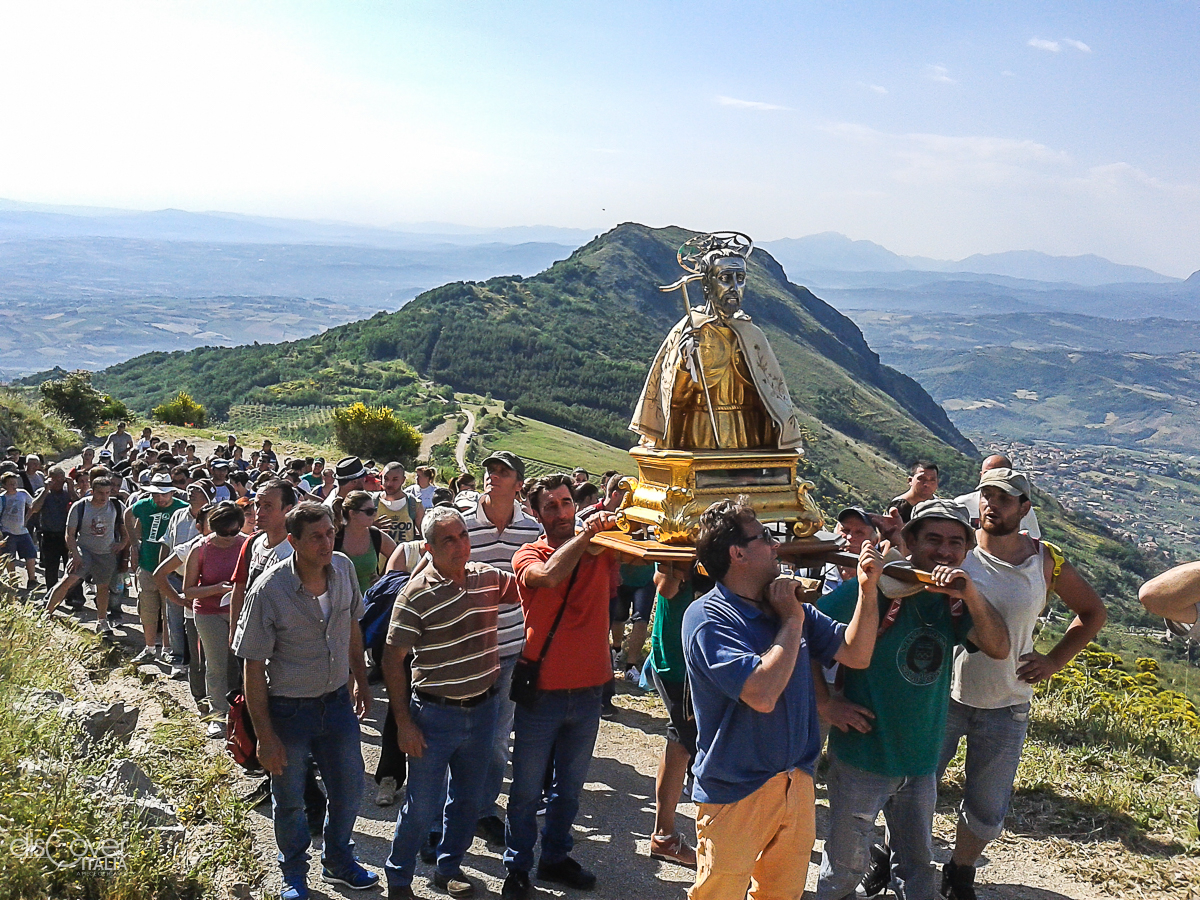
Another festival not to be missed is the Chestnut Festival, which is usually held in the last weekend of October. The festival, once itinerant in the many farmhouses of the town, given the large turnout of people, is now always held in the center of the town. In the various stands you can taste the local wine and food (such as cecatielli, crepes, soffritto), especially chestnut desserts, the famous pecorino vitulanese and the Aglianico wine of Carpineto. On this occasion, excursions among the chestnut groves or urban trekking in the historic center of the town are also organized.
The Pro-loco Camposauro, often in collaboration with Corale San Menna, in addition to the Chestnut Festival also takes care of other cultural events and shows, such as the Vitulanese Summer. "Corrida" has been highly anticipated in recent years.
Another very unique event is the Sagra del piecuro, held in the mountains every year on August 13th. Truth is that it is not a traditional festival, but the most important event of the year, some sort of "Confraternity of the Piecuro". There is a very specific ceremonial to be respected, in fact in order to participate you must be male and be "baptized", which means that you must pass the initiation rite. This goliardic party is particularly important by the many out-of-town Vitulanesi.
There are also many other festivals throughout the year. Among the religious ones there is the festival of the Madonna delle Grazie, of the Madonna of the slaves (once a festival of rural work), the traditional fire of Sant'Antonio (January 17), the flower display of Corpus Domini, San Giuseppe (which has not been held for several years). We also remember the Carnival, once very popular in Vitulano. Occasionally there is a representation of "I misi 'e l'anno" with the death of Carnival. In the same days the church of the SS. Trinity is decorated for the Quarantore.
The mountain
Vitulano is also its mountain: Camposauro. The link between the people of Vitulano and the mountains is very tight, after all Vitulano was a town of shepherds.
Camposauro is part of the Taburno-Camposauro regional park and reaches almost 1400 meters above sea level. In the lower part the flora is characterized by oak, chestnut, maple and hornbeam; over 900 meters we find beech and holly. As for the fauna, the Apennine wolf (now few specimens), wild boar, hare, marten, buzzard. To be added then horses and cows in the wild.
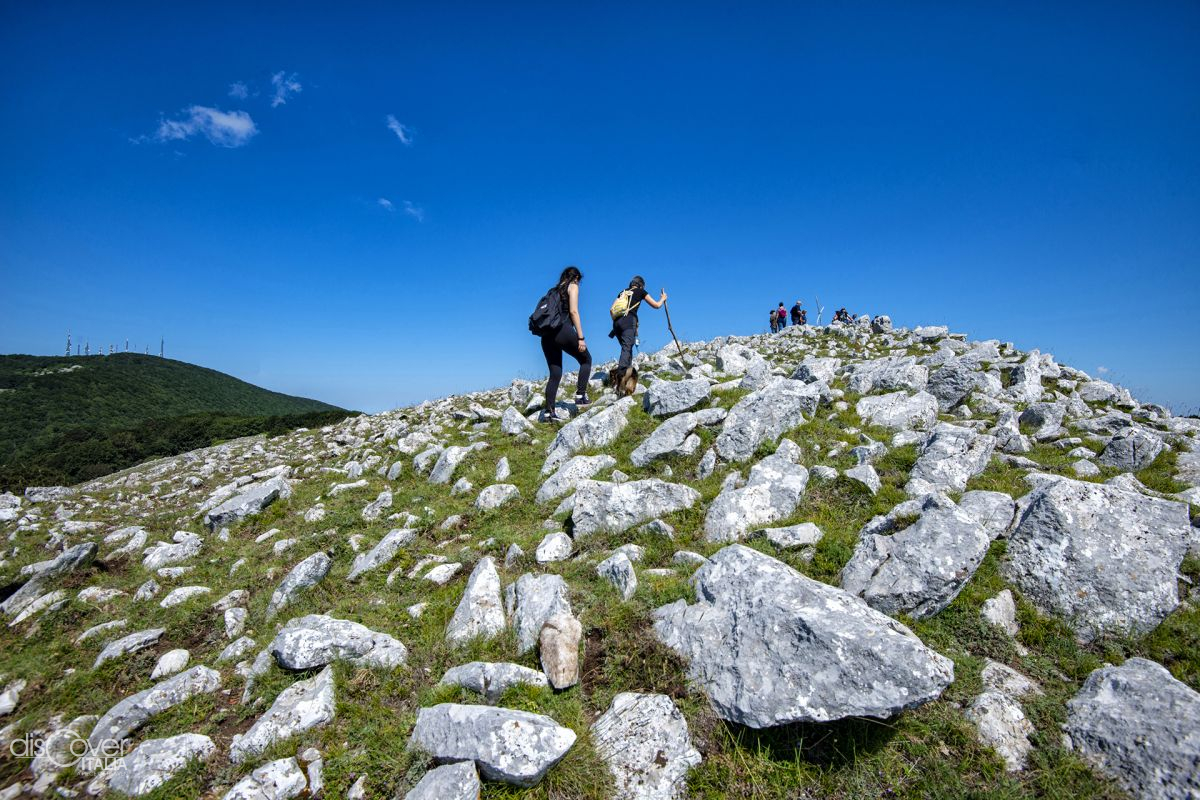
Particularly evocativeare also are the ancient mountain fountains, which in recent years, thanks to the commitment of private citizens and institutions, have been redeveloped and included in the trekking routes.
Since the past, the mountain has been a great resource of the Vitulanesi, since the town's economy was mainly based on sheep farming, agriculture, the production of charcoal (with the typical "catuozzi") and the trade of cheese and chestnuts.
Today Camposauro is the ideal pleasant place to immerse yourself in nature, but once it was populated by shepherds and cowherds who lived in “pagliare”, a traditional shepherds' huts made of straw. They lived on the mountains for a good part of the year, then in winter they moved by foot to "Tarlaore", a working land. Even today, older people tell of the experience of transhumance, when in the night they moved with the flocks to reach fertile plains of Caserta.
Further down the valley, where the deciduous forest is denser, the soil is fertile and the excursion ends less accentuated, the real protagonist is the chestnut. In Vitulano there are three types of chestnuts: the enzeta, the pannarana and the wild. The tastiest and easiest to work of the three is the Enzeta chestnut, typical of the Vitulano mountains.
In the past, chestnuts were one of the main foods of the Vitulanese, especially in autumn. Thanks to its nutritional values, it was widely used in the diet of the poorest people. Given the abundant production, chestnuts were also sold in the various towns of Benevento.
Today Camposauro is great pride for Vitulano, who jealously guard the mountain as if it were a second home. The "La dormiente" equestrian center is very active and tries to combine the passion for horses with the love for the mountains. On the other hand, the Trakking Camposaro group, led by Nicola Matarazzo, organizes mountain excursions in which always many people from all over the region take part. During these walks, mountain experts accompany visitors through the shadowy woods and valleys that can only be reached by foot or on horseback. From the peaks of the mountain, it is possible to enjoy a breathtaking view. On the luckiest days it is possible to extend the view as far as Naples.
Visit Vitulano today
Fortunately, in recent years the country has become increasingly welcoming to visitors, not only for the warmth of the people, but also for the facilities adapted to receive tourists. Vitulano is the right place for a relaxing and restful holiday.
History and art lovers can visit the various churches of the town (the Holy Trinity, the Vanvitellian bell tower, the Noble Chapel, the Annunziata), admire the Last Supper by Pompeo Landolfo and enter the municipal gallery of Contemporary Art. Then continue with a walk among the ancient farmhouses that have preserved their original structure and finally cool off at the Royal Fountain.

Horseback riding enthusiasts cannot miss a horse ride along the ancient shepherds' paths, or, for hiking lovers, take part in trekking walks in the pristine woods of Camposauro.
For those who love popular festivals, it is recommended to participate in the patronal feast of San Menna, with the procession on the mountains to the hermitage followed by the songs and dances of Vitulano.
You cant leave Vitulano without tasting the typical local cuisine in the various restaurants or "agriturismi"(holyday farm houses). Don't miss the Vitulanese pecorino and the aglianico wine from Carpineto. The best time, besides of course summer, is definitely autumn with the Chestnut Festival.
For the night, then, it is possible to stay overnight in various B&Bs always open.
Conclusion
In the last few years, Vitulano, like every small towns in the south of Italy, is suffering the consequences of a crisis that seems to never end. There are more and more young and old people that for work necessity, decide to leave the country and live in large cities of the north or abroad. And when a country becomes depopulated, it loses some of its vitality.
Despite the contingent, often structural difficulties common to all the towns of the Sannio, Vitulano tries to react, driven primarily by love for their land. Even those who are away from home like me, today, thanks also to social networks, can follow the fate of their country and feel like a protagonist despite the many kilometers away.
At the beginning I was talking about the typical pride of those born and raised in the villages of Sannio. I can certainly testify that by maturing and often having experiences away from one's home, one is able to appreciate even more its native country. We realize that much of that beauty we were used to held, is actually not that obvious. I came to realize that the views of Camposauro, the sense of community, the atmosphere of the patronal feasts, the charm of ancient traditions are not to be taken for granted. Today I am aware that Vitulano has given me something, many things, that no other place could have. This is why I am proud of Vitulano.



Comments powered by CComment